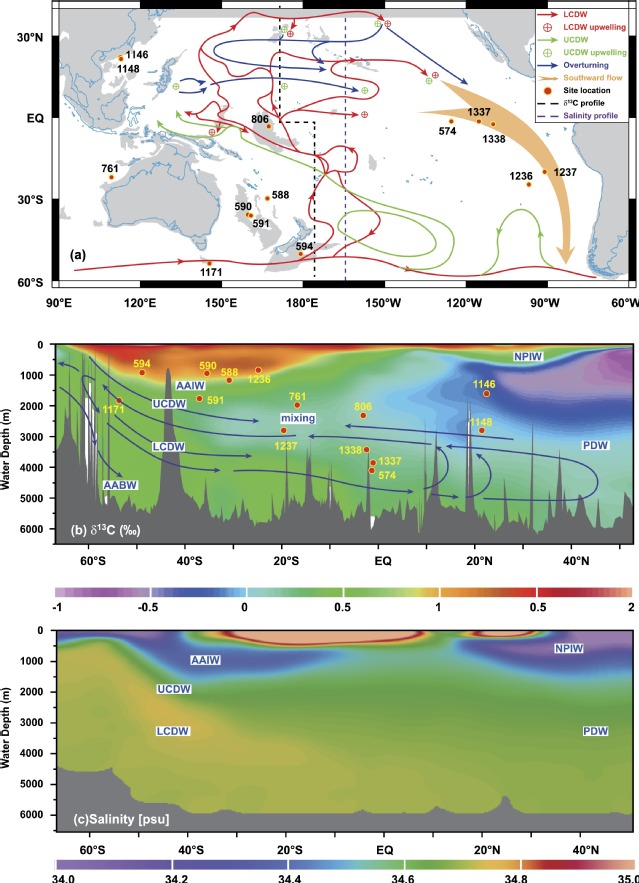, juntiana, wentao maa,c, ke lia, jimin yua,d
a state key laboratory of marine geology, tongji university, shanghai, 200092, china
b state key laboratory of loess and quaternary geology, institute of earth environment, chinese academy of sciences, xi'an, 710075, china
c state key laboratory of satellite ocean environment dynamics, second institute of oceanography, soa, hangzhou 310012, china
d research school of earth sciences, the australian national university, canberra, act 2601, australia
abstract:
east antarctic ice sheet expansion (eaie) at ∼13.9ma in the middle miocene represents a major climatic event during the long-term cenozoic cooling, but ocean circulation and carbon cycle changes during this event remain unclear. here, we present new fish teeth isotope (εnd) and benthic foraminiferal b/ca records from the south china sea (scs), newly integrated meridional pacific benthic foraminiferal 18o and 13c records and simulated results from a biogeochemical box model to explore the responses of deep pacific ocean circulation and carbon cycle across eaie. the εnd and meridional benthic 13c records reveal a more isolated pacific deep water (pdw) and a sluggish pacific meridional overturning circulation during the post-eaie with respect to the pre-eaie owing to weakened southern-sourced deep water formation. the deep-water [co32−] and calcium carbonate mass accumulation rate in the scs display markedly similar increases followed by recoveries to the pre-eaie level during eaie, which were probably caused by a shelf–basin shift of caco3 deposition and strengthened weathering due to a sea level fall within eaie. the model results show that the ∼1‰ positive 13c excursion during eaie could be attributed to increased weathering of high-13c shelf carbonates and a terrestrial carbon reservoir expansion. the drawdown of atmospheric co2 over the middle miocene were probably caused by combined effects of increased shelf carbonate weathering, expanded land biosphere carbon storage and a sluggish deep pacific meridional overturning circulation.
full article:


